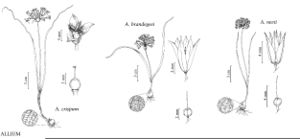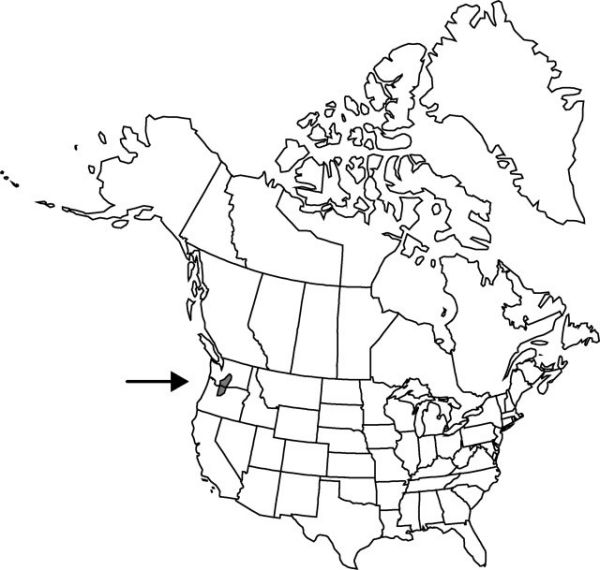Allium nevii
Proc. Amer. Acad. Arts 14: 231. 1879.
Bulbs 1–5+, not clustered on stout, primary rhizome, ovoid, 1–2 × 1–2 cm; outer coats enclosing 1 or more bulbs, light brown, membranous, ± reticulate, cells quadrate to polygonal, vertically oblong, without fibers; inner coats white or pink, cells obscure, quadrate. Leaves usually persistent, withering from tip at anthesis, 2, basally sheathing, sheaths not extending much above soil surface; blade solid, flat or ± channeled, falcate, 12–25 cm × 2–3 mm, margins entire. Scape persistent, 1–3, erect, solid, terete or somewhat flattened, 2-edged, not expanded proximal to inflorescence, 15–30 cm × 1–3 mm. Umbel persistent, erect, compact, 10–30-flowered, hemispheric, bulbils unknown; spathe bracts persistent, 2, 5–6-veined, ovate, ± equal, apex acute. Flowers campanulate to substellate, 6–8 mm; tepals spreading, rose-colored, lanceolate, ± equal, becoming papery in fruit, margins entire, apex acuminate; stamens ± equaling tepals, or exserted; anthers blue-gray; pollen light blue or gray; ovary distinctly crested; processes 6, 2 per lobe, low, rounded, margins entire; style exserted, linear; stigma capitate, unlobed; pedicel 8–12 mm. Seed coat dull; cells smooth. 2n = 14.
Phenology: Flowering May–Jul.
Habitat: Heavy, rocky soils, wet meadows, or along streams
Elevation: 30–1900 m
Discussion
Selected References
None.

